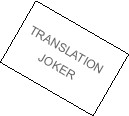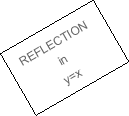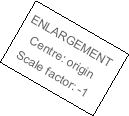Or search by topic
Number and algebra
Geometry and measure
Probability and statistics
Working mathematically
Advanced mathematics
For younger learners
Transformation Game



Why not challenge a friend to play this transformation game?
You will need:
- Board - print this and then enlarge onto A3 paper with a photocopier if you have access to one. Otherwise, you can print it on two sheets of A4 paper and join them together using the bigger version.
- Cards - print this sheet three times and cut out the cards to make a pack of 45 transformation cards.



- Counter (you could cut out a triangle to use as a counter)
- 2 - 4 players
How to play:
- Shuffle the cards, deal five to each player and place the rest of the pack face down on the table. Put the counter on the triangle marked "start".
-
 Players take it in turns to move. When it is a player's turn, s/he must try to move the playing piece from where it is on the board to another of the marked triangles. S/he must use a transformation or combination of transformations corresponding to one or more of the cards in his/her
hand. In the case of more than one card, the intermediate positions of the playing piece need not correspond to a marked triangle.
Players take it in turns to move. When it is a player's turn, s/he must try to move the playing piece from where it is on the board to another of the marked triangles. S/he must use a transformation or combination of transformations corresponding to one or more of the cards in his/her
hand. In the case of more than one card, the intermediate positions of the playing piece need not correspond to a marked triangle. - When a player has moved, s/he throws away the card or cards s/he has used, and replaces it (or them) with cards from the unused pile.
- The player scores the number of points corresponding to the number on the triangle where s/he finally lands.
- If a player cannot move (or does not wish to move), s/he may throw away one card and replace it with another.
- When using a joker, a player must announce what it represents before s/he uses it.
- If a player makes a mistake, the playing piece is returned to its last position and the player at fault misses that turn.
- The game ends when the pile of unused cards is empty and no one can move. The player with the highest total score wins.
You may also like
2001 Spatial Oddity
With one cut a piece of card 16 cm by 9 cm can be made into two pieces which can be rearranged to form a square 12 cm by 12 cm. Explain how this can be done.
Screwed-up
A cylindrical helix is just a spiral on a cylinder, like an ordinary spring or the thread on a bolt. If I turn a left-handed helix over (top to bottom) does it become a right handed helix?
Counting Triangles
Triangles are formed by joining the vertices of a skeletal cube. How many different types of triangle are there? How many triangles altogether?

